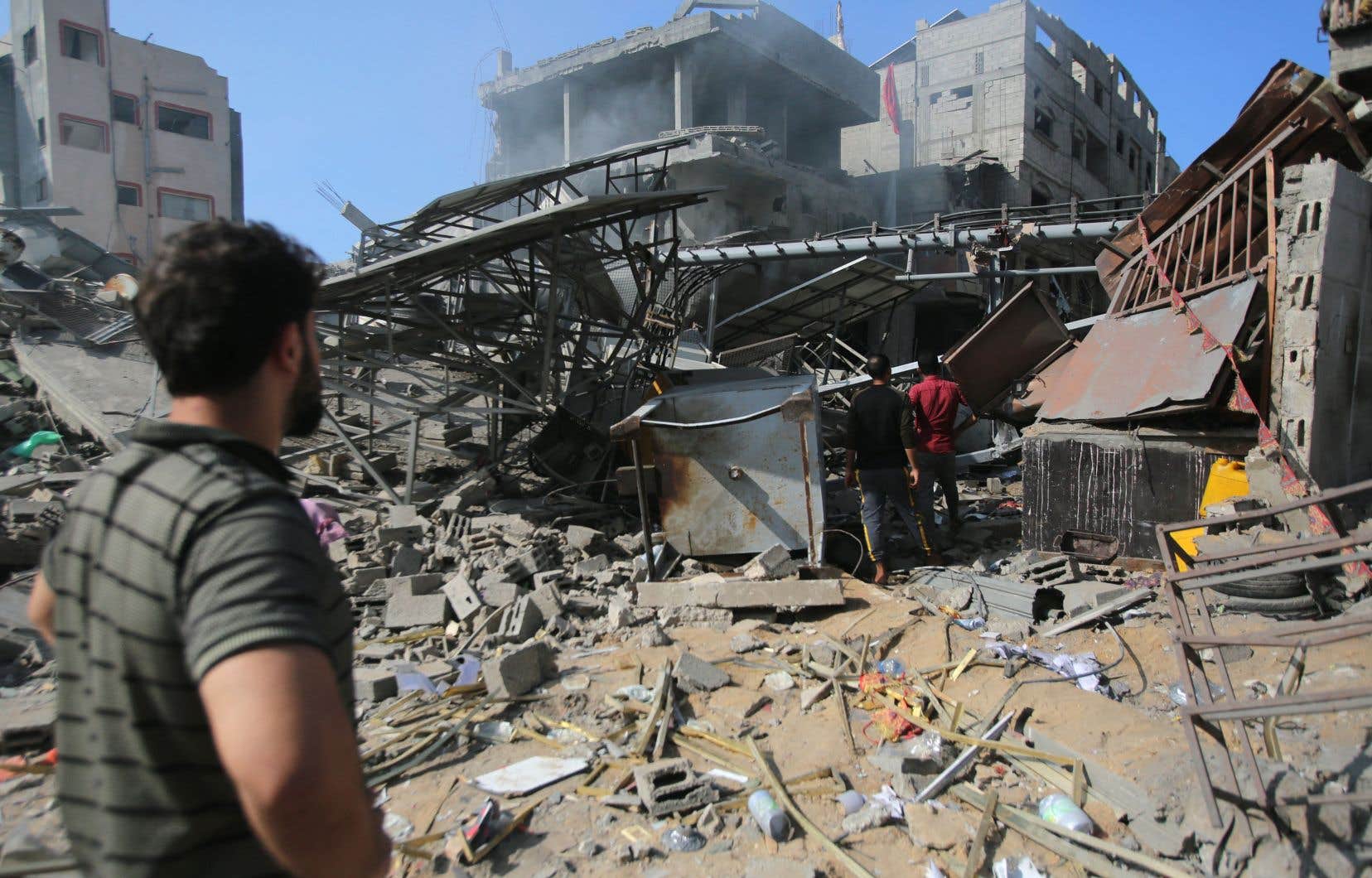The Israeli army is engaged in a “face to face” with Hamas fighters at the gates of Gaza City, an ultra-violent confrontation which portends a phase of high-risk urban fighting for both camps, according to the Israeli army and experts.
In the northern part of the encircled Gaza City, “the face-to-face” has indeed begun, according to Israeli army spokesperson Daniel Hagari.
“We are talking about fights where we see each other from one building to another,” he told the press.
According to the first Israeli images, all that remains in the north of Gaza City are piles of concrete on the ground, most of the tall buildings have collapsed and the earth has turned over as the armored bulldozers passed by, which flattened everything. .
A first line of armored vehicles was formed, behind which the Israeli positions were sheltered and from which the infantry incursions started in shallow depth, systematically, and this is a novelty, supported by artillery, the air force, as well as intelligence.
This combined arms combat appears to be at the heart of the tactics chosen by Israel for this offensive, the fifth against Hamas since 2005.
Each ground unit took with it an air officer, to “speak the same language” to air commands and maximize the effectiveness of operational support, AFP learned from an army officer. Israeli air force.
“Beige blends perfectly with green,” he comments, referring to the colors of air force and army uniforms.
Threat from everywhere
On the ground, a journalist from Israeli public television, Roy Sharon, authorized to accompany the troops, described a “360° feeling of threat” and also noted a “very slow and very aggressive advance with a lot of control over the environment », unlike the war against Hezbollah in Lebanon in 2006.
“This is the most extreme combat situation, the threat can emerge from every window, door, tunnel, everywhere,” confirms to AFP Avi Issacharoff, journalist, Israeli security analyst and former soldier in the Israeli security unit. Douvdevan elite.
All soldiers from the special and infantry units train regularly at Tseelim, a base in the Negev where several neighborhoods of Gaza, from houses to minarets, have been recreated under the name “Baladia”.
For the infantry, on the Israeli side, the soldiers of the Givati unit are on the front line and the command of the divisions formed for the battle comes from this brigade, which “knows Gaza like no one else”, affirms the military correspondent of the newspaper Israeli Yedioth Aharonot.
The rules of engagement of the Israeli army, with regard to civilians, still numbering 300,000 to 400,000 according to the UN in this northern area of Gaza, have not been made public.
And the hard work of urban combat, including face-to-face combat with automatic weapons, has not yet begun, as all analysts are already warning about the lethality of the terrain in overpopulated Gaza with its ultra-dense buildings.
“Defense in depth”
Israel has experience with a last ground incursion in 2014, which lasted two weeks and was limited to fighting on the outskirts of Gaza City.
“Hamas has had 15 years to prepare a defense in depth that includes underground fortifications, […] communications tunnels, locations and combat positions, as well as potential minefields, improvised explosive devices, anti-armor explosive devices and booby-trapped buildings,” lists military strategy specialist Michael Knights of the Washington Institute .
On the Hamas side, two modes of operation stand out: first the repeated use of a new type of anti-tank missile, the “Yassine 105”, and the appearance of homemade attack drones, as in Ukraine, according to videos posted by the military wing of the movement.
In one of these videos we can see a Palestinian fighter in jeans and a t-shirt coming out of a hole dug in the ground, sneaking into the bushes, hoisting a rocket launcher on his shoulder and firing at a few dozen meters a Yassine 105 on an Israeli army Merkava tank.
“We can be quite confident in the urban combat skills” of the Israelis, notes John Spencer, a retired American major and leading author on urban combat, in an interview with AFP.
“We see these Hamas guerrilla techniques appearing here and there, but I would be more worried about the network of tunnels,” explains John Spencer, who speaks of 1,300 galleries over 500 km.
The war, triggered on October 7 by the unprecedented attack carried out by Hamas on Israeli soil, left at least 1,400 dead in Israel, the majority civilians killed on the day of the attack, according to the authorities. More than 10,000 Palestinians, mostly civilians, have already been killed since then in Israeli retaliatory bombings in Gaza, according to the Hamas health ministry.
At least 30 Israeli soldiers have died since the start of ground operations on October 27. Hamas does not publish reports on its fighters.
